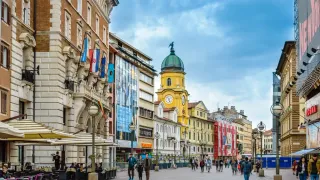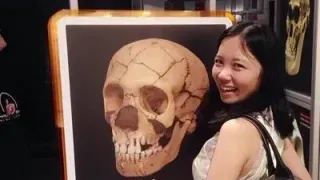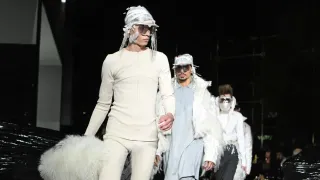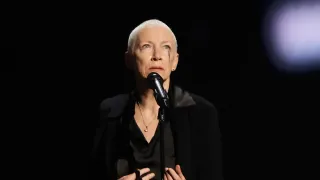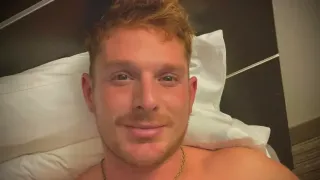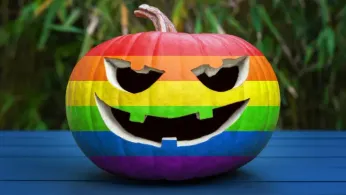
Oct 29
The Night the Closet Disappeared - The Roots Of Queer Halloween
READ TIME: 4 MIN.
Every October, as night falls and the world slides into masquerade, Halloween emerges as a festival of transformation—its origins woven from ancient Celtic paganism, Christian adaptation, and folk tradition. The earliest roots of Halloween can be traced to Samhain, a Gaelic festival marking the end of harvest and the start of winter, celebrated over 2,000 years ago by Celtic peoples. Samhain was believed to be a liminal time when the boundary between the worlds of the living and the dead thinned, allowing spirits to roam freely. To ward off these wandering souls, villagers lit bonfires, donned costumes, and made offerings of food—rituals that echo in today’s ghostly getups and trick-or-treating .
With the spread of Christianity, the church sought to tame these pagan customs by weaving them into its own calendar. In the 8th century, Pope Gregory III designated November 1 as All Saints’ Day, honoring the holy dead; the night before became All Hallows’ Eve, which eventually morphed into Halloween. Even as the church attempted to Christianize Samhain, the festival’s themes of death, disguise, and supernatural possibility persisted, blending folklore, fear, and festive mischief .
If Samhain and All Hallows’ Eve taught us anything, it’s that Halloween is a night for crossing boundaries—between worlds, identities, and social norms. The tradition of costuming (originally a way to fool spirits) evolved into a carnival of disguise, allowing people to play with gender, persona, and fantasy. For LGBTQ+ communities, Halloween’s invitation to mask and unmask oneself has carried profound meaning.
Historian Stuart Timmons, co-author of"Gay L.A.: A History of Sexual Outlaws, Power Politics, and Lipstick Lesbians," notes: “Halloween became a time when you could be out in public in drag and not get arrested, because everyone was in costume. It was a rare moment of safety and celebration in eras when queer life was forced underground” .
From the early 20th century, LGBTQ+ people quietly claimed Halloween as a night of freedom—donning drag, masquerading as their true selves, and gathering at secret balls or parties. The costume offered both camouflage and revelation, allowing queer folks to test boundaries, flirt with danger, and forge community under the cover of darkness.
By the mid-20th century, Halloween blossomed into one of the most important holidays in American queer culture. In cities like New York and San Francisco, clandestine gay Halloween balls provided rare opportunities for LGBTQ+ people to gather, dance, and be seen—often at great risk. The Drag Balls of Harlem in the 1920s and' 30s drew thousands, as documented in George Chauncey’s "Gay New York," where Halloween was “the only night of the year when men could dress as women on the streets, and vice versa, without fear of arrest” .
By the 1970s, the Castro district in San Francisco and Greenwich Village in New York hosted sprawling street parades—public spectacles of drag, camp, and community. In these spaces, Halloween became a ritual of chosen family: queer people found solidarity, acceptance, and joy together, even as mainstream society often excluded or vilified them. Activist Cleve Jones recalls, “Halloween was our night to be fabulous, to be outrageous, and to claim the streets. It was about visibility and survival” .
As the LGBTQ+ rights movement grew, Halloween’s celebrations became more visible—and more political. The annual Greenwich Village Halloween Parade, launched in 1974, quickly became a focal point for queer expression, blending satire, activism, and artistry. Drag queens, transgender people, and queer youth embraced the parade as a stage for self-invention, protest, and pride—using costumes, masks, and performance to challenge norms and demand recognition .
Halloween’s allure for the LGBTQ+ community goes beyond mere revelry. Its themes—disguise, transformation, liberation, and chosen family—resonate deeply with queer experience. Scholar Dr. Eric Cervini, author of "The Deviant’s War," observes, “For LGBTQ+ people, Halloween is about subverting expectation. The mask is both a cover and a tool for revelation; it’s a way to play with identity and reclaim space in a world that often demands conformity” .
Drag artists have long been at the heart of queer Halloween, using the night’s license to exaggerate, parody, and glorify gender. Legendary drag queen RuPaul once said, “We’re all born naked and the rest is drag. On Halloween, everyone gets to live that truth, if only for a night” . For many transgender people, Halloween offers a safe context to experiment with presentation—sometimes as a first step toward coming out or finding community.
In eras of repression, when being openly LGBTQ+ risked violence or arrest, Halloween provided sanctuary. The very act of masking oneself was radical: it allowed queer people to be visible, to celebrate, and to build chosen families in plain sight. As LGBTQ+ historian Susan Stryker explains, “Halloween allowed us to claim public space and rewrite the rules. It was a night when all the world’s a stage, and we were the stars” .
Today, as LGBTQ+ rights have gained ground and mainstream culture has embraced drag, camp, and queer aesthetics, Halloween’s legacy continues to evolve. Social media platforms like Instagram and TikTok have given rise to viral costume challenges, digital drag shows, and online communities where queer youth celebrate together—regardless of geography .
Major cities still host iconic queer Halloween events: the Castro’s street party, the West Hollywood Carnaval, and countless drag balls and queer dance parties. Yet the heart of the holiday remains unchanged: Halloween is a night for self-invention, for community, and for joy in the face of adversity. As nonbinary performer Alok Vaid-Menon told The Advocate, “Halloween is a time to be who you are, or who you want to be. For many of us, that means claiming freedom, creativity, and family—no matter how the world sees us” .
As mainstream acceptance grows, some worry that Halloween’s radical queer spirit may be diluted. Yet for LGBTQ+ communities, the night remains a shimmering celebration of possibility—a chance to dance with ghosts, rewrite the rules, and let every glittering mask reveal something true.
So whether you’re sashaying down Castro Street, dancing in drag at the local bar, or scrolling through TikTok in a vampire gown, remember: Halloween is yours to claim. It’s a night for chosen family, transformation, and sparkle—where the boundaries between worlds collapse, and queer joy reigns.

